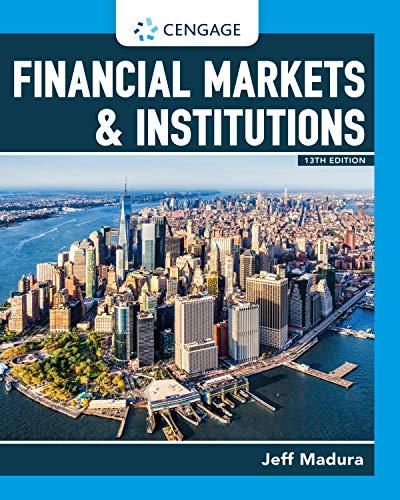Question
1. BASE CASE Complete the waterfall shown in Exhibit 10 using the benchmarks assumptions outlined in the case. Under these assumptions, calculate the expected return
1. BASE CASE Complete the waterfall shown in Exhibit 10 using the benchmarks assumptions outlined in the case. Under these assumptions, calculate the expected return to Wildcat and its limited partners and compare those returns to the property-level return on Financial Commons if it is sold after three years. Returns to Wildcat should be calculated without including the management fee. In the Excel file, I provide notes for some cells on how to calculate those values. If you find any errors in my cell descriptions, please let me know.
2. For each of the following scenarios, recalculate spreadsheets for Exhibits 9 and 10. With the exception of the changes noted below, keep the benchmark assumptions constant. Each scenario is to be recalculated independently; that is, each scenario is to be treated as a distinct variation from the benchmark. Assume that outside investors will become partners with Wildcat only if they believe they will receive an IRR of at least 20% and Wildcat will only close on the property if it believes it can earn a 50% IRR. Discuss whether or not the deal will proceed. Scenario A After more careful underwriting, the life insurance company offers a reduced LTV of 60% and an interest rate of 7%. Assume a 3-year holding period Scenario B The outside investors are nervous about the economic climate. As a result, they demand the following investor-friendly changes to the waterfall structure. Assume a 3-year holding period.
a. Outside investors will provide only 90% of the required equity
b. Outside investors will receive a 10% preferred return
c. Outside investors will receive a 12% IRR preference (This means that at reversion, after invested capital has been return to the investors and to Wildcat, the outside investors will receive additional cash until they achieve a 12% IRR over the lifetime of the investment. Remaining cash flow will then go through the promote)
d. Cash flows in the promote structure will be split 80/20 rather than 70/30 (both reversion and operational cash flows)
3. Evaluate the benchmark assumptions Zaski made. Would you have made different assumptions? What do you think is the fair market price for Financial Commons? Explain why your answer does or does not differ from $10,400,000 (calculating the going-in cap rate or discussing the projected price appreciation in 3 years may be helpful).
4. If you were an outside investor being approached by Wildcat and were shown the financial projections outlined above, what additional information would you seek before investing?
Step by Step Solution
There are 3 Steps involved in it
Step: 1

Get Instant Access to Expert-Tailored Solutions
See step-by-step solutions with expert insights and AI powered tools for academic success
Step: 2

Step: 3

Ace Your Homework with AI
Get the answers you need in no time with our AI-driven, step-by-step assistance
Get Started


